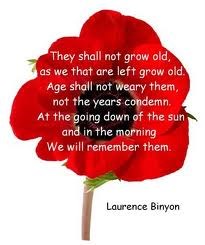This is our first attempt at an EarthCache, we hope that you enjoy it! We have used various sources to compile the information below, so thanks go to Dr H M King, Historic England and Imperial War Museums website.
The listed coordinates will take you to the War Memorial in Bury St Edmunds which commemorates those from Bury St Edmunds who gave their lives in WW1 & WW2. This memorial is made from Clipsham Stone and was unveiled and dedicated on 13th October 1921.
The quarry at Clipsham has been in use since Roman times. In the 14th Century Clipsham stone was used in the construction of Windsor Castle and later has been used at the Palace of Westminster and in the rebuilding of the House of Commons after the blitz. Clipsham stone is mostly pale cream in colour but can sometimes have a blue hue to it. This stone is regarded as one of the hardest limestones around and is fine to medium grained, often containing shell fragments.
Limestone is a sedimentary rock which is often formed on the seabed in areas where calcium carbonate rich material accumulates. Often the calcium carbonate comes from the broken down shells and skeletons of dead organisms that were living in calcium carbonate rich waters. After the sediment starts to build up, a number of different processes can occur to form the limestone.
Clipsham stone is an oolitic limestone and is an example of a chemical limestone. In this case, the limestone is made of many ‘oolites’. These are small spheres which are formed around a sand grain or shell fragment. Trillions of oolites are washed around the seabed floor collecting aragonite, a naturally occurring calcium carbonate.
As the supersaturated water is warmed, it is unable to hold as much soluble calcium carbonate and as a result calcium carbonate is precipitated from the water and forms a ‘cement’ with the oolites, binding them together. The layer then starts to set and can capture larger fragments of shell or organisms which eventually become fossils.
To claim this EarthCache please send us your answers to the questions below via the geocaching messaging service or by email. Any logs without accompanying answers will be removed! Please do not put any of your answers in your log.
Q1. With reference to the War Memorial, where can one find the roll of honour for those who gave their lives in WW1 & WW2?
Q2. Take a look at the stone, there are many different colours. Tell us what the primary colour of the stone is and also describe what colour grains can you see?
Q3. Look at the different sizes of grains, pick one area and estimate the size of the smallest and largest grain that you can see in mm.
Q4. Can you see any evidence of marine life? Tell us what you find.

**************************************
The series is dedicated to those who fought for their country. "We will remember them!”
If anyone would like to place a War Memorial Cache of your own then please do so. We would ask if you do so please contact Just-us-Two through their profile page or justustwo1013@gmail.com
so they can keep track of the numbers
*************************************
*****PLEASE NOTE IMPORTANT *****
****PHYSICAL CACHES ARE NOT ALLOWED TO BE PLACED ON THE ACTUAL MEMORIAL OR WITHIN THE BOUNDARY OF SUCH MEMORIALS. AT ALL TIMES TREAT LOCATIONS OF MEMORIALS WITH RESPECT. ****